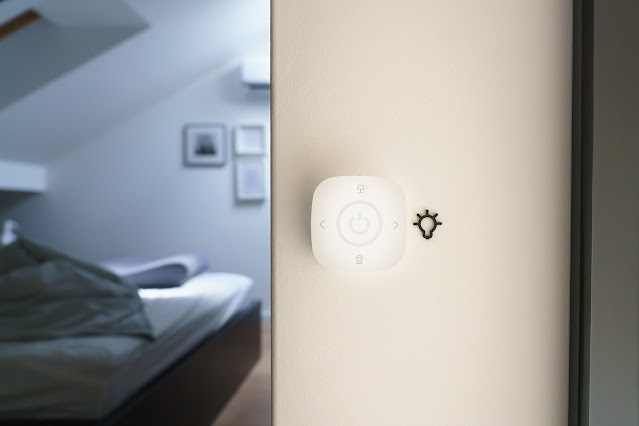Revolutionizing Industries: The Industrial Internet of Things Explained
- Introduction
- What is the Industrial Internet of Things (IIoT)?
- The Key Components of IIoT
- Sensors and Devices
- Connectivity
- Data Analysis and Artificial Intelligence
- How IIoT is Revolutionizing Industries
- Manufacturing
- Healthcare
- Agriculture
- Energy
- Benefits of IIoT
- Improved Efficiency
- Predictive Maintenance
- Cost Reduction
- Safety Enhancements
- Challenges and Concerns
- Security
- Data Privacy
- Integration
- Real-world Examples of IIoT Success
- General Electric (GE)
- Siemens
- John Deere
- Future Trends in IIoT
- Conclusion
- Unique FAQs
Revolutionizing Industries: The Industrial Internet of Things Explained
Introduction
The world is undergoing a digital transformation, and at the heart of this revolution lies the Industrial Internet of Things (IIoT). As we navigate the digital age, this article explores the ins and outs of IIoT and its profound impact on various industries.
What is the Industrial Internet of Things (IIoT)?
The Industrial Internet of Things, or IIoT, is a network of interconnected devices, machines, and systems that use data and analytics to improve operations, efficiency, and productivity in various industries. Unlike the regular Internet of Things (IoT), which focuses on consumer applications, IIoT is tailored for industrial and commercial use.
The Key Components of IIoT
Sensors and Devices
These can range from temperature sensors in a factory to smart agricultural equipment in a farm. The data collected is the lifeblood of IIoT.
Connectivity
To transmit data, IIoT relies on various communication protocols, including Wi-Fi, cellular networks, and low-power wide-area networks (LPWAN). This connectivity enables real-time data exchange between devices.
Data Analysis and Artificial Intelligence
The data collected from sensors is meaningless without analysis. Advanced algorithms and artificial intelligence are used to make sense of this data, providing valuable insights and predictions.
How IIoT is Revolutionizing Industries
Manufacturing
In the manufacturing sector, IIoT optimizes production processes, minimizes downtime, and enhances product quality. Factories are becoming smarter, with machines that can self-diagnose issues and order replacement parts independently.
Healthcare
In healthcare, IIoT is improving patient care through remote monitoring and wearable devices. Doctors can access real-time patient data, and medical equipment can alert staff to potential issues, improving patient outcomes.
Agriculture
In agriculture, IIoT aids in precision farming. Smart equipment and sensors monitor soil conditions, weather, and crop health, allowing farmers to make data-driven decisions for higher yields and reduced resource usage.
Energy
The energy sector benefits from IIoT through intelligent grids and infrastructure. It enables efficient energy distribution, better management of resources, and rapid response to outages.
Benefits of IIoT
Improved Efficiency
IIoT streamlines operations, reducing manual intervention, and improving overall efficiency.
Predictive Maintenance
Machines can predict when they require maintenance, reducing costly downtime. IIoT helps in scheduling maintenance activities when they are most needed.
Cost Reduction
By optimizing processes and resource usage, IIoT contributes to significant cost reductions over time.
Safety Enhancements
Enhanced monitoring and predictive capabilities lead to safer working conditions and fewer accidents in industries like manufacturing and construction.
Challenges and Concerns
Security
With increased connectivity, the risk of cyberattacks grows.
Data Privacy
Collecting vast amounts of data raises privacy concerns. Protecting sensitive information is a significant challenge in IIoT.
Integration
Integrating IIoT into existing systems can be complex and costly, requiring careful planning.
Real-world Examples of IIoT Success
General Electric (GE)
GE's "Brilliant Manufacturing" initiative utilizes IIoT to enhance production processes, resulting in cost savings and efficiency improvements.
Siemens
Siemens employs IIoT to improve product design, manufacturing, and predictive maintenance.
John Deere
John Deere uses IIoT to create smart farming solutions that optimize crop yields and resource use.
Future Trends in IIoT
The future of IIoT promises even more connectivity, automation, and data-driven decision-making. As technology advances, industries will continue to reap the benefits of IIoT.
Conclusion
The Industrial Internet of Things has become a transformative force, revolutionizing industries across the board. As we progress into a more connected and data-driven world, embracing IIoT is no longer an option but a necessity.
Unique FAQs
- What industries can benefit most from IIoT?
- How does IIoT impact job roles in these industries?
- What are the primary concerns regarding IIoT security?
- Can small businesses afford to implement IIoT solutions?
- How is IIoT contributing to sustainability in industries like agriculture and energy?







No comments: